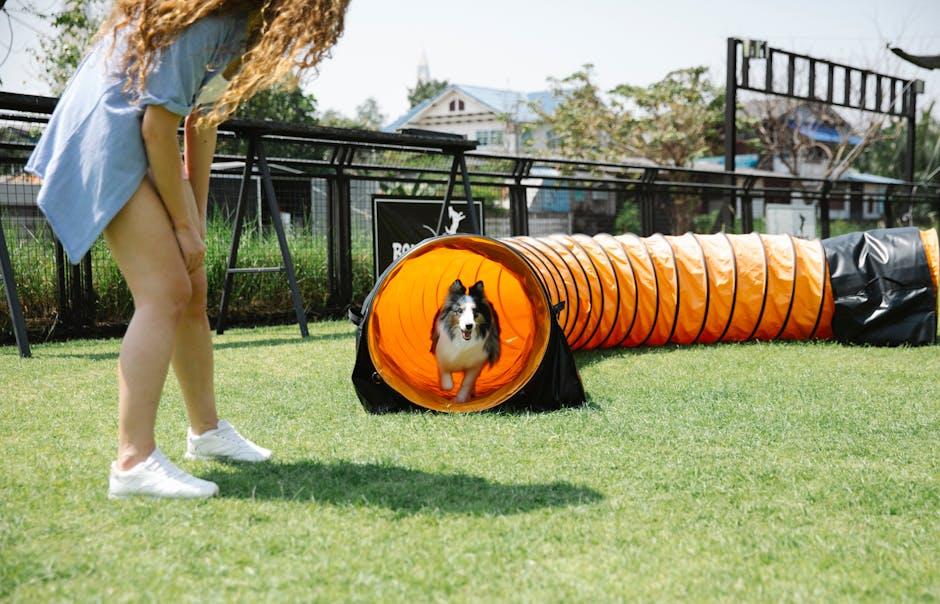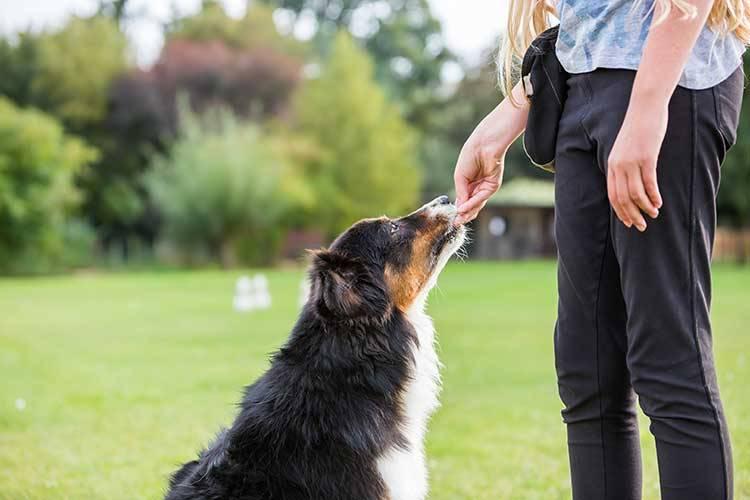In the world of dog training, few topics spark as much curiosity and debate as the effectiveness of positive reinforcement. As pet owners and trainers alike strive to nurture well-behaved and happy companions, the question arises: can dogs truly be trained using only positive reinforcement? This approach, rooted in rewarding desirable behaviors rather than punishing unwanted ones, has gained popularity for its compassionate methodology and its potential to strengthen the bond between humans and their canine friends. In this article, we will explore the principles behind positive reinforcement, examine its benefits and limitations, and offer practical insights into how you can implement this technique to foster a harmonious relationship with your furry friend. Whether you’re a seasoned trainer or a first-time dog owner, understanding the nuances of positive reinforcement can transform the way you communicate with your dog, making the journey of training both effective and enjoyable.
Understanding Positive Reinforcement in Dog Training
Positive reinforcement is a powerful tool in dog training, focusing on rewarding desirable behavior rather than punishing unwanted actions. This method relies on the concept of adding something favorable, like treats, praise, or playtime, to increase the likelihood of a behavior being repeated. It’s not just about giving a treat; it’s about understanding your dog’s preferences and using them strategically. Consistency is key, as well as timing – rewards should be given immediately after the desired behavior to create a clear connection in your dog’s mind.
- Rewards: Treats, verbal praise, toys, or playtime.
- Consistency: Ensure everyone involved in the training uses the same commands and rewards.
- Timing: Offer rewards immediately after the desired behavior.
- Observation: Pay attention to what motivates your dog the most.
Critics often question whether dogs can be trained using only positive reinforcement. While it is an effective method for many behaviors, some situations may require a combination of techniques. However, when done correctly, positive reinforcement can foster a deeper bond between you and your dog, creating a training environment filled with trust and joy. It’s about building a language of encouragement that your dog can understand and respond to positively.

The Benefits and Challenges of Positive-Only Methods
Embracing positive-only training methods offers a myriad of benefits for both dogs and their owners. Positive reinforcement fosters a nurturing environment, encouraging dogs to learn through rewarding desired behaviors rather than punishing unwanted ones. This approach not only builds trust but also strengthens the bond between pet and owner, as it relies on consistent, affirmative communication. Dogs trained with positive reinforcement often exhibit higher levels of enthusiasm and willingness to learn, as they associate training sessions with enjoyable experiences.
- Enhanced trust and communication between dog and owner
- Increased enthusiasm for learning
- Reduced anxiety and stress for the dog
However, the journey isn’t without its challenges. Some behaviors may be difficult to address with rewards alone, especially if they are deeply ingrained or driven by strong instincts. In such cases, patience and creativity are key. Trainers may need to find high-value rewards or break down the training process into smaller, more manageable steps. Additionally, ensuring consistency across all family members or handlers can be a challenge, as the effectiveness of positive reinforcement relies heavily on uniform application. Despite these hurdles, the long-term benefits of cultivating a harmonious and trusting relationship with your dog often outweigh the initial challenges.
Effective Techniques for Positive Reinforcement Success
Training dogs with positive reinforcement can be incredibly rewarding, both for the dog and the trainer. The key lies in understanding the nuances of this technique and applying them consistently. Here are some effective methods to ensure success:
- Consistency is Crucial: Make sure to reinforce desired behaviors consistently. This means rewarding your dog every time they perform the desired action, at least in the initial stages of training.
- Timing Matters: Deliver the reward immediately after the desired behavior is exhibited. This helps your dog make a clear connection between the behavior and the reward.
- Use High-Value Rewards: Determine what motivates your dog the most. Some dogs respond best to treats, while others may prefer affection or playtime. Use these high-value rewards to encourage repeated behaviors.
- Be Patient: Every dog learns at their own pace. Patience and understanding are key to ensuring that your dog feels comfortable and confident as they learn.
By integrating these techniques into your training sessions, you can foster a positive learning environment that encourages your dog to thrive and develop new skills.
Building a Stronger Bond with Your Dog through Positive Training
Positive reinforcement is a transformative approach to training that nurtures a deeper connection between you and your furry friend. By focusing on rewarding desired behaviors, this method not only encourages learning but also builds trust and mutual respect. Imagine your dog eagerly responding to commands because they associate them with positive outcomes, like treats, praise, or playtime. This fosters an environment where learning is joyful and stress-free for both of you.
When implementing this approach, consider the following tips:
- Consistency is Key: Reward your dog every time they perform the desired behavior to reinforce the association.
- Timing Matters: Deliver rewards immediately after the behavior to ensure your dog connects the action with the reward.
- Variety of Rewards: Use a mix of treats, toys, and affection to keep training sessions exciting and engaging.
- Patience and Persistence: Some behaviors take time to learn. Stay patient and persistent, celebrating small victories along the way.
By embracing positive reinforcement, you create a supportive learning environment that enhances your relationship with your dog, turning training sessions into a time of joy and bonding.

